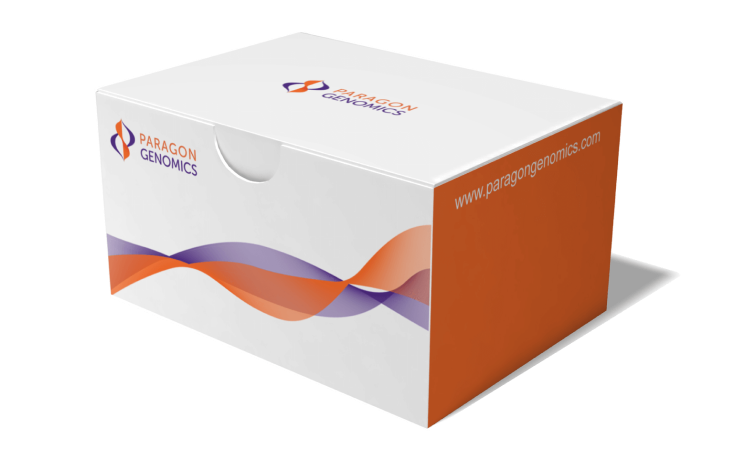Detecting Rare Mutations with ctDNA Liquid Biopsy
Liquid biopsy is a method used to detect specific mutations in cell-free, circulating tumor DNA (ctDNA) from biofluids, such as plasma, serum, urine, and cerebrospinal fluid. Researchers around the world are actively investigating the use of ctDNA analysis as a biomarker for profiling tumors, monitoring the effectiveness of therapies, assessing the clonal evolution of tumor cell populations, identifying resistance mechanisms, detecting early disease, and measuring minimal residual disease.
Regardless of the specific use, liquid biopsy has the benefit of being non-invasive, and thus allowing samples to be easily collected for serial assessments. Mutation detection in liquid biopsy, however, is challenged by the extremely low fraction of ctDNA in the cell-free DNA (cfDNA) samples, making accurate detection of rare mutations difficult.
Next-generation sequencing (NGS) has made it possible to detect a large number of mutations in many genes on a significant number of samples. By using targeted NGS panels, sequencing can be focused on relevant targets so that each target is sequenced thousands or tens of thousands of times to ensure a high degree of sensitivity. High specificity is achieved using error-correction techniques to remove errors that arise from sequencing and amplification of the DNA.
Product Highlight
CleanPlex UMI Lung Cancer Panel is a ready-to-use targeted NGS assay designed for rapid and high confidence detection of low-frequency variants across the hotspot regions of 23 genes associated with lung cancer. Specifically designed to work with cell-free DNA (cfDNA) and FFPE DNA for precise analysis of tumor DNA in liquid biopsy and tumor profiling applications. Starting with just 20 ng of DNA, sequencing-ready libraries can be prepared using a single-tube workflow in just 3.5 hours. Low-frequency variants below 0.5% variant allele frequency can be confidently detected with high specificity using just 30 ng of DNA.
View Product
CleanPlex UMI Lung Cancer Panel for Detecting Low-Frequency Variants using a Targeted Amplicon Sequencing Approach And Molecular Barcodes
Download our poster from the American Society of Human Genetics (ASHG) 2018 Annual Meeting to see the full dataset demonstrating CleanPlex UMI Lung Cancer Panel’s performance.
Get TrailWhy Choose CleanPlex UMI Technology:
Liquid Biopsy for Cancer
CleanPlex UMI Technology is a multiplex PCR-based NGS target enrichment method for precise tumor DNA analysis. It features a highly advanced proprietary primer design algorithm and an innovative, patented molecular barcoding chemistry. Together, they allow CleanPlex UMI Ready-to-Use and Custom NGS Panels to confidently detect low-frequency variants such as circulating DNA (ctDNA) in cell-free DNA (cfDNA).
With Paragon Genomics CleanPlex UMI Technology you get:
Innovative Molecular Barcoding Chemistry:
CleanPlex UMI Technology uses a proprietary molecular barcoding chemistry to uniquely label and differentiate the two strands of each DNA molecule. The incorporated unique molecular identifiers (UMIs) allow PCR and sequencing errors to be corrected in the sequencing data, resulting in improved sensitivity and specificity for variant detection.
Confident Variant Detection:
CleanPlex UMI Technology incorporates UMIs to enable confident detection of low-frequency variants. Consensus sequences can be constructed from the sequencing data to remove PCR and sequencing errors prior to variant calling. As a result, true mutations can be accurately distinguished from background noise. With CleanPlex UMI Technology, low-frequency variants below 0.5% allele frequency can be detected with high specificity using just 30 ng of input DNA.
Enhanced Error Correction:
Remove PCR and sequencing errors with powerful error correction enabled by novel unique molecular identifiers that can distinguish the two strands of DNA for early cancer detection.
Cost-Effective Sequencing for Liquid Biopsy:
Generate data with high on-target performance and coverage uniformity to minimize the cost of sequencing.
Quick Turnaround Time (TAT):
Accelerate your liquid biopsy cancer screening assay development project and get your personalized NGS panels in less than 4 weeks (from design acceptance to shipment). Easily build a CleanPlex Custom NGS or Sequencing Panel to accelerate your research and assay development.
Use ParagonDesigner, our free online multiplex PCR primer design tool, to submit your target regions of interest and instantly receive a design coverage report to review. Our custom amplicon panel design experts will be available through the process to provide you a quote, help you with any questions, and make further optimization to meet your needs.
Ultra-Fast Single Tube Workflow:
CleanPlex UMI Technology features a simple, single-tube workflow that can be completed in 3.5 hours and requires only 85 min of hands-on time. Molecular-barcoded and target-enriched NGS libraries can be quickly prepared for faster time to results.
Single-tube workflow minimizes sample loss to preserve information in the sample, and reduces the likelihood of errors and sample mix ups to ensure positive sample identification.
Liquid Biopsy for Cancer Detection:
Frequently Asked Questions
qPCR (quantitative qPCR), ddPCR (droplet digital PCR), and NGS are some of the current molecular methods to analyze cfDNA. Depending on the application and consideration to time, cost, and number of targets, a certain method may be preferred.
Early Detection. Cancer often develops much faster than the development of physical symptoms, making it typically difficult to detect cancer in earlier stages. Liquid biopsies make it more possible to locate cancer before symptoms show up due to the fact that blood tests are easy to administer. They are also much more cost-effective than traditional biopsies.
Non-Invasive Process. A liquid biopsy only needs blood from the individual, whereas a tumor biopsy is highly-invasive, typically requires some form of surgery, and in turn, a recovery time for the individual. Traditional biopsies also have much higher risks of infection and damage to tissue.
Real-Time View. Liquid cancer biopsy blood samples can be taken frequently over a long period of time, which helps to provide a real-time view of how the cancer might be evolving in the individual.
Free Consultation
Enter your email below
Enter your email below to schedule a free consultation with our PhD-level expert scientists to learn how our best-in-class custom oncology NGS panel design for amplicon sequencing and precision oncology can help advance your work.